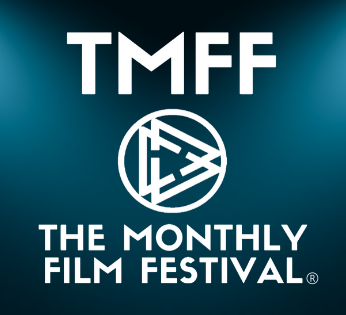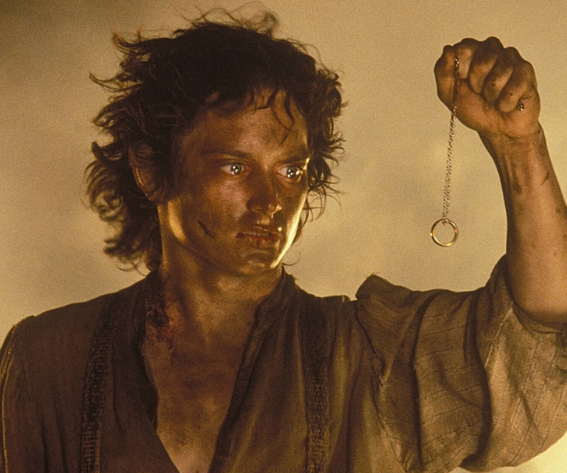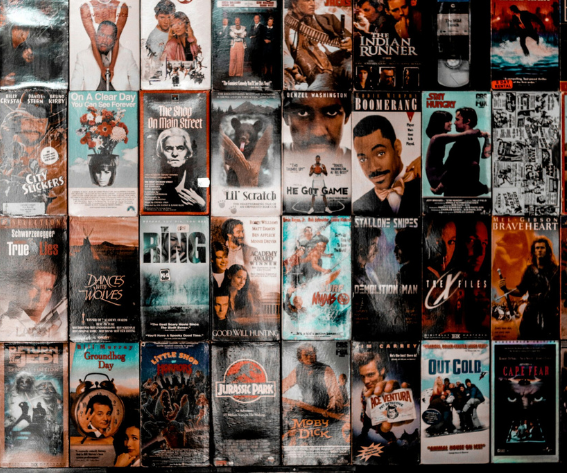Despite the common belief that sequels are often bad, studios continue to produce them by the hundreds. Why? Because the same audience that criticises sequels still watches them in cinemas. Studios earn tens and even hundreds of millions of dollars, which encourages them to keep expanding popular film universes with sequels, prequels, spin-offs, and other offshoots.
The logic behind this is simple. It’s easier for viewers to choose a film featuring familiar characters and established rules of the game. And, contrary to popular opinion, some sequels are actually well made. In fact, there are trilogies where all three instalments are genuinely worth watching.
Today, we’ll revisit some of those rare cases. At the same time, we’ll focus only on trilogies where all the films are of consistently high quality. That’s why, for example, The Godfather doesn’t make the cut—while the third film is decent, it clearly falls short of the first two.
Three Flavours Cornetto Trilogy (also known as the Cornetto Trilogy or the Blood and Ice Cream Trilogy)
- Shaun of the Dead (2004)
- Hot Fuzz (2007)
- The World’s End (2013)
Not everyone realises that these three films are part of a trilogy. What unites them is, oddly enough, the Cornetto ice cream. In Shaun of the Dead and Hot Fuzz, there’s a scene where Nick Frost’s character is bought a Cornetto; in The World’s End, only the label appears. The trilogy’s name is a tongue-in-cheek nod to Krzysztof Kieślowski’s Three Colours trilogy, which was themed around the French flag (you’ll see another reference to that later in this article).
The masterminds behind this trilogy are Edgar Wright and Simon Pegg. Each film is a comedy packed with black humour, absurd situations, and unexpected twists. Simon Pegg and Nick Frost form a brilliant comedic duo across all three.
In Shaun of the Dead, a bored electronics salesman and his equally unmotivated roommate live a mundane life. Shaun’s biggest challenge seems to be fixing things with his girlfriend—until they suddenly find themselves in the middle of a zombie apocalypse.
Hot Fuzz follows another odd pairing: a highly competent London police officer is transferred to a sleepy village, where he’s saddled with a bumbling local partner. But what begins as a quiet posting soon reveals a sinister conspiracy.
Finally, The World’s End brings together a group of old school friends who return to their hometown to complete a legendary pub crawl they never finished in their youth. Their final stop is meant to be The World’s End pub—an eerily fitting name, as things take a turn for the apocalyptic.
The Millennium Trilogy
- The Girl with the Dragon Tattoo (Män som hatar kvinnor) – 2009
- The Girl Who Played with Fire (Flickan som lekte med elden) – 2009
- The Girl Who Kicked the Hornet’s Nest (Luftslottet som sprängdes) – 2009
Strictly speaking, this entry slightly breaks our own rule, as the first film is noticeably stronger than the second and third, which is why it’s also the most well-known. However, all three films centred on Lisbeth Salander are definitely worth watching. These are gripping crime thrillers, where a compelling mix of mystery, investigative journalism, and psychological tension pulls the viewer in—much like the suspense you’ll find at Hidden Jack Casino, where the stakes are high and every reveal keeps you hooked.
The standout character is the brilliant, emotionally complex hacker Lisbeth Salander, who adds a unique edge and elevates the series above countless other thrillers and detective stories. Much of the credit for this goes to Noomi Rapace, whose performance made her an international star. Hollywood later produced its own version of the first film—David Fincher’s adaptation starring Rooney Mara and Daniel Craig—and even extended the universe with Claire Foy in a reboot. But for many, the original Swedish trilogy remains the most atmospheric and emotionally intense. The Scandinavians really know how to do dark, gripping cinema.
The Lord of the Rings
- The Fellowship of the Ring – 2001
- The Two Towers – 2002
- The Return of the King – 2003
This is more of a single epic story split into three parts than a traditional trilogy, but that’s just a technicality. One of the most iconic trilogies in cinema, The Lord of the Rings sparked anxiety among Tolkien fans during production (because, let’s be honest, when are fans not worried when someone touches their favourite universe?). Still, Peter Jackson managed the enormous task brilliantly.
We considered including The Hobbit trilogy as well, since we’re fond of it too — but compared to The Lord of the Rings, it lacks the same originality and epic scale. Still, watching either trilogy makes for a perfect day out idea.
The Three Colours Trilogy (Blue / White / Red)
- Three Colours: Blue (Trois Couleurs: Bleu) – 1993
- Three Colours: White (Trois Couleurs: Blanc, Trzy kolory: Biały) – 1994
- Three Colours: Red (Trois Couleurs: Rouge) – 1994
Krzysztof Kieślowski, one of the most significant Polish and European directors of the late 20th century, created a trilogy named after the colours of the French flag. Although a co-production between Poland, Switzerland, and France, the funding was largely French—hence the symbolic nod to the flag.
In Blue, Juliette Binoche plays a woman who survives a car crash but loses her husband and daughter. She tries to cut ties with the past, but painful memories and unexpected discoveries—including her husband’s secret lover and unborn child—pull her back in.
White stars Julie Delpy and Zbigniew Zamachowski. After his French wife divorces him, a Polish hairdresser returns to Poland—although not without difficulty. Unable to forget her, he comes up with a scheme to win her back while making money on the black market.
In Red, Irène Jacob and Jean-Louis Trintignant play the leads. A young student accidentally injures a retired judge’s dog, leading to an unlikely friendship. Despite their differences, they grow close—and this final chapter subtly connects the entire trilogy, weaving together threads from all three stories.
Lethal Weapon Trilogy
- Lethal Weapon – 1987
- Lethal Weapon 2 – 1989
- Lethal Weapon 3 – 1992
Technically, this is already a quadrilogy (and Mel Gibson is reportedly working on a fifth instalment), but the franchise reached its peak during its time as a trilogy. Classic old-school action built around the dynamic duo of two mismatched cops—Mel Gibson as the unpredictable Martin Riggs and Danny Glover as the more grounded Roger Murtaugh. The chemistry between the leads only grows stronger with each film, blending intense action with sharp, often hilarious banter. It’s a perfect example of what made buddy-cop movies iconic in the late ’80s and early ’90s.
Star Wars: The Original Trilogy
- Episode IV: A New Hope – 1977
- Episode V: The Empire Strikes Back – 1980
- Episode VI: Return of the Jedi – 1983
We do appreciate the prequel trilogy as well, but it’s hard to argue with the fact that Episode I is weaker than the two that followed. The original Star Wars trilogy, however, became an instant classic and has influenced generations of filmmakers far beyond the science fiction genre.
Everything came together here: the imaginative world-building, the memorable cast, groundbreaking visuals for its time, a perfect blend of humour and drama, and surprisingly deep philosophical undertones. Most fans agree that The Empire Strikes Back stands as the best of the three, but the entire trilogy is consistently strong and beloved.
Back to the Future
- Back to the Future – 1985
- Back to the Future Part II – 1989
- Back to the Future Part III – 1990
It’s rare for science fiction to feel so grounded in logic. The Back to the Future trilogy offers detailed explanations of time travel, paradoxes, and timelines, making it feel more like speculative science than fantasy. Robert Zemeckis crafted a tight, clever story about how even the smallest changes in the past can radically alter the future.
The success of the first film gave him the chance to revisit the story and expand the universe. Part II takes things further with its vision of the future, and Part III throws the characters back to the Wild West. Each film brings something new while staying true to the original idea—and together, they form one of the most inventive and entertaining trilogies ever made.
The Vengeance Trilogy
- Sympathy for Mr. Vengeance (복수는 나의 것) – 2002
- Oldboy (올드보이) – 2003
- Lady Vengeance (친절한 금자씨) – 2005
Park Chan-wook’s Vengeance Trilogy is a raw, emotionally devastating exploration of revenge and its consequences. While Oldboy is the most well-known of the three, each entry brings its own perspective to the theme, forming a deeply layered and unforgettable collection.
Sympathy for Mr. Vengeance follows a deaf-mute factory worker who’s desperate to pay for his sister’s kidney transplant. After being scammed and losing his job, he and his anarchist girlfriend make a desperate choice—kidnapping the daughter of his former boss. What begins as a crime driven by need spirals into a tragic and violent chain reaction.
Oldboy starts off as a story of simple revenge: a man is kidnapped, imprisoned for 15 years, then mysteriously released. He sets out to find those responsible—but what unfolds is a dark and psychologically twisted journey that leaves no one untouched.
Lady Vengeance closes the trilogy with a tale of guilt and redemption. A young woman takes the fall for a crime she didn’t commit, coerced into confession by threats against her daughter. After years in prison, she emerges with a meticulous plan for vengeance against the man who manipulated her life.
The Death Trilogy
- Amores perros – 2000
- 21 Grams – 2003
- Babel – 2006
Alejandro González Iñárritu’s Death Trilogy explores the fragility of life and the deep emotional wounds that trauma leaves behind. Though not directly connected by story, the three films share common themes: loss, love, pain, and the unpredictable intersections of human lives.
Amores perros was Iñárritu’s breakout film in Mexico. Three stories overlap: a teenager in love with his brother’s wife enters the world of dog fighting to fund their escape; a model’s life unravels after a car accident; and a vagrant ex-hitman watches over strays while haunted by his past. Each tale is harsh and intimate, painting a vivid picture of desperation and consequence.
21 Grams stars Sean Penn, Naomi Watts, and Benicio Del Toro. Their characters’ lives intersect through a tragic accident—one that leaves a man dead, a woman shattered, and a grieving soul in need of a heart transplant. The title refers to the supposed weight of the human soul, lost at the moment of death. The film is fragmented in structure, mimicking the emotional disarray of its characters.
Babel takes the concept global. A gunshot in Morocco triggers a ripple effect that affects an American couple, a Mexican nanny in the US, and a deaf Japanese teenager. Miscommunication, cultural barriers, and unintended consequences run through the film, highlighting how fragile our connections really are.
Each film in this trilogy received Oscar nominations, and their success paved the way for Iñárritu’s later masterpieces, Birdman and The Revenant.
The Dark Knight Trilogy
- Batman Begins – 2005
- The Dark Knight – 2008
- The Dark Knight Rises – 2012
When Christopher Nolan took on Batman, few expected him to redefine the superhero genre—but that’s exactly what he did. The Dark Knight Trilogy brought realism, grit, and moral complexity to a character that had often been treated as larger-than-life or campy.
Batman Begins reimagines Bruce Wayne’s origin story with psychological depth. It’s a grounded look at trauma, fear, and the path to becoming something more than a man.
Then came The Dark Knight, and with it, Heath Ledger’s unforgettable Joker. Initially met with skepticism, Ledger’s performance redefined the character and earned him a posthumous Oscar. The film is more than a superhero story—it’s a crime epic about chaos, ethics, and the thin line between order and anarchy.
The Dark Knight Rises brought the trilogy to an ambitious, if divisive, close. With Gotham on the brink and a new villain—Bane—rising, the film delves into themes of legacy, sacrifice, and rebirth. Christian Bale’s Batman may be the protagonist, but it’s the supporting characters—and the villains—that leave the deepest mark.









Leave a reply